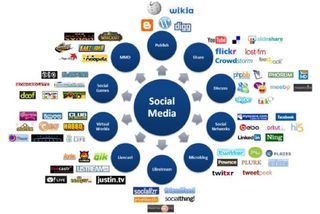As many of you know, the Tidemark team is a little nutty when it comes to the concept of measuring things. It is our belief that if something can’t be measured (in the business world), it doesn’t have much value. Without metrics, it is not possible to reliably optimize any business process and consistently make improvements.
This is one of the reasons I’ve personally struggled with making a connection between social networking  activities and recruitment sourcing. And yet this is the most common question we get from our clients: "When are you going to figure out how to source more candidates via social networking?" I wish I had an easy answer to that question, but there are still some complexities that cloud the issue.
activities and recruitment sourcing. And yet this is the most common question we get from our clients: "When are you going to figure out how to source more candidates via social networking?" I wish I had an easy answer to that question, but there are still some complexities that cloud the issue.
Traditionally, candidate sourcing is a marketing activity that depends upon gaining access to a large number of people who are “congregating” online for a common purpose—i.e. improving their employment prospects.
Because candidates typically gather in common online locations (a job board, a career information site, a professional society, etc.), there are “media pipes” that allow marketers to get their recruitment messages to these individuals. Getting the right message to the right group at just the right time is the challenge of recruitment sourcing. To be successful in this environment, we’ve learned to tweak content…measure…tweak delivery…measure…tweak timing…measure, etc.
While this process is challenging, the constant in this equation is that people tend to congregate online around a topic of interest to the group. In the online social networking arena, different rules apply. In this framework, people congregate online around relationships. And these relationships are often very eclectic.
For example, what does my grandmother have in common with my college roommate? Probably not much, other than the fact that they both know me. You can probably see why crafting a marketing message that would be of interest to both individuals would be near impossible. In addition, how could someone measure something so disconnected and random?
I’m still not sure there is a great answer to that question, but there are some really smart folks in several start-up companies who are beginning to ask these questions. And, in the process of trying to find solutions, they are identifying and tracking metrics that may help harness the marketing potential of the social networking medium.
The metric that these companies are trying to track is “influence.” By influence they mean–the propensity that a large number of people listen to what a certain person has to say. Or, in some cases, it doesn’t have to be a large number of people. It can be a small number of people who very passionately listen (and in essence follow the direction of) to an influential individual (if you happen to remember the Hale-Bopp Comet cult in late ‘90s, you have the idea).
Of course, the first variety of influence has been going on in pop-culture for a long time. When Oprah tells her audience that she is enjoying some book by an obscure author, the sales of that book explode. When Tom Cruise orders a beer with a shot of Patron tequila in the movie Vanilla Sky, not only does this mixed drink become popular, but also Patron soon starts to outsell other tequila brands in the United State by an 8 to 1 margin.
Obviously, most normal people do not have this kind of influence. But with online social networks, even "normal people" do have some influence. In fact, it turns out that some normal people (i.e. non celebrities) have a lot of influence…so much influence that they are starting to attract the attention of marketers.
In my next post, I’ll tell you about the companies who are doing the pioneer work in this area. Also, we’ll discuss how people who have a lot of influence in the world of online social networking may be some of your best hires.
Until then, put some thought into this question: Of the agents in your office and/or those in your professional network, who do you believe has the most influence?
Once you have this person in your mind, ask yourself: Has this person influenced any of the decisions you’ve made about products you’ve purchased, activities in which you've participated, or other ways you’ve spent your time and resources? If so, how did they do it?
 Editor's Note: This article was written by Ben Hess. Ben is the Founding Partner and Managing Director of Tidemark, Inc. and a regular contributor to WorkPuzzle. Comments or questions are welcome. If you're an email subscriber, reply to this WorkPuzzle email. If you read the blog directly from the web, you can click the "comments" link below.
Editor's Note: This article was written by Ben Hess. Ben is the Founding Partner and Managing Director of Tidemark, Inc. and a regular contributor to WorkPuzzle. Comments or questions are welcome. If you're an email subscriber, reply to this WorkPuzzle email. If you read the blog directly from the web, you can click the "comments" link below.

